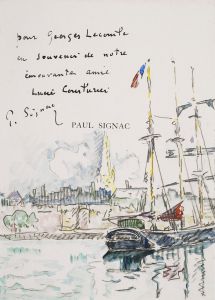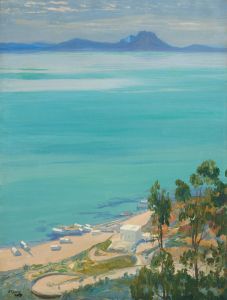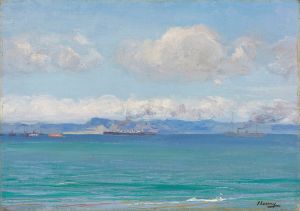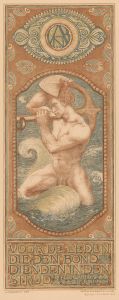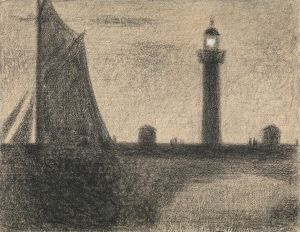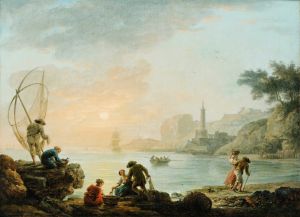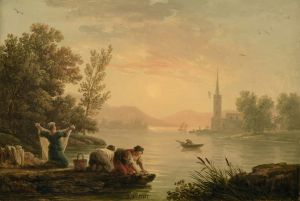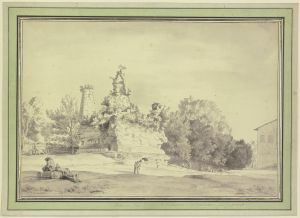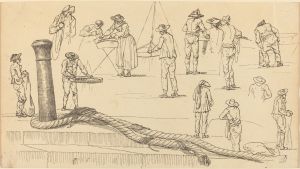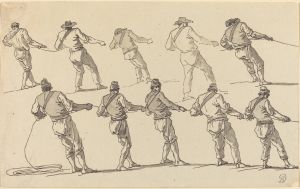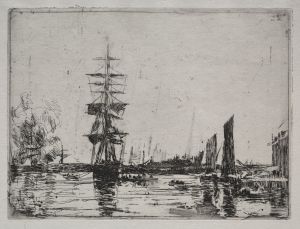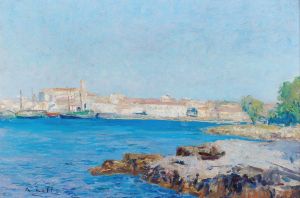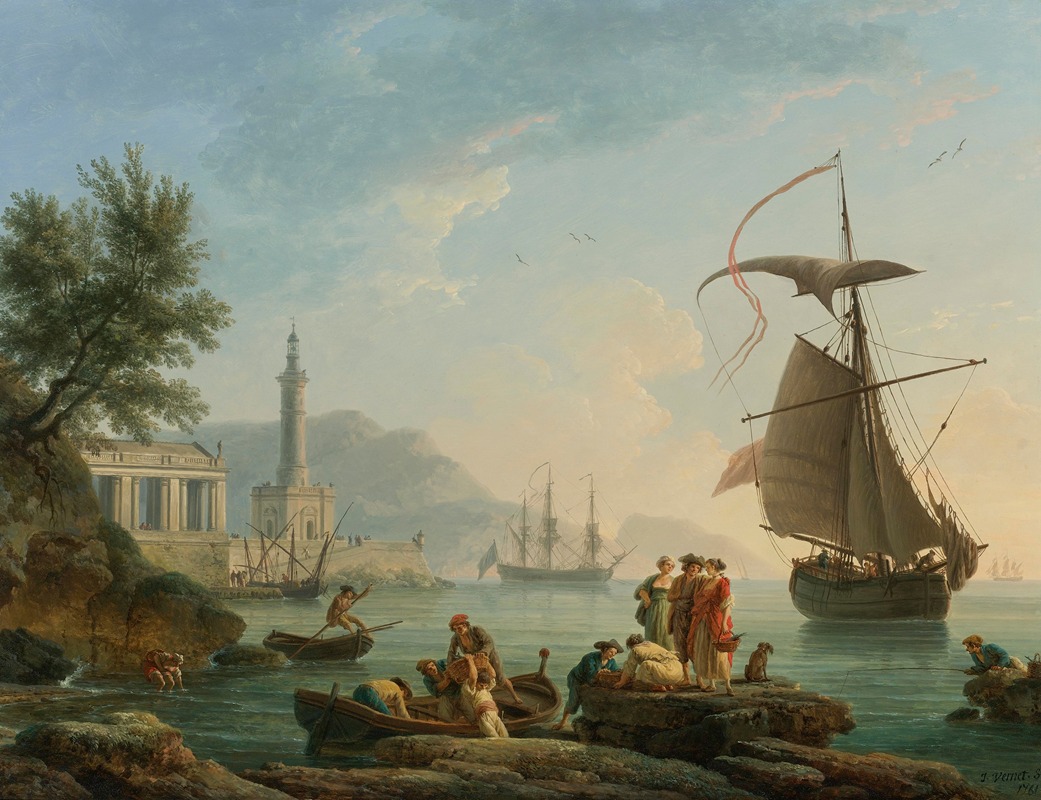
A Mediterranean Harbor At Sunset With Fisherfolk At The Water’s Edge, A Lighthouse And A Man Of War At Anchor In The Bay
A hand-painted replica of Claude-Joseph Vernet’s masterpiece A Mediterranean Harbor At Sunset With Fisherfolk At The Water’s Edge, A Lighthouse And A Man Of War At Anchor In The Bay, meticulously crafted by professional artists to capture the true essence of the original. Each piece is created with museum-quality canvas and rare mineral pigments, carefully painted by experienced artists with delicate brushstrokes and rich, layered colors to perfectly recreate the texture of the original artwork. Unlike machine-printed reproductions, this hand-painted version brings the painting to life, infused with the artist’s emotions and skill in every stroke. Whether for personal collection or home decoration, it instantly elevates the artistic atmosphere of any space.
"A Mediterranean Harbor At Sunset With Fisherfolk At The Water’s Edge, A Lighthouse And A Man Of War At Anchor In The Bay" is a painting by the renowned French artist Claude-Joseph Vernet. Vernet, born on August 14, 1714, in Avignon, France, is celebrated for his masterful seascapes and landscapes, which often depict dramatic and picturesque scenes of nature and human activity.
This particular painting exemplifies Vernet's skill in capturing the serene yet dynamic atmosphere of a Mediterranean harbor at sunset. The composition is meticulously balanced, with the setting sun casting a warm, golden light across the scene, creating a tranquil yet vibrant ambiance. The use of light and shadow is particularly notable, as it enhances the depth and realism of the painting.
In the foreground, fisherfolk are depicted at the water's edge, engaging in their daily activities. Their presence adds a human element to the scene, grounding the natural beauty in everyday life. The figures are rendered with careful attention to detail, reflecting Vernet's ability to portray human forms and their interactions with the environment.
A lighthouse stands prominently in the middle ground, serving as a beacon of safety and guidance for the ships in the bay. Its inclusion not only adds to the maritime theme of the painting but also symbolizes hope and security. The lighthouse is a recurring motif in Vernet's works, often representing the intersection of human ingenuity and the natural world.
In the background, a man-of-war ship is anchored in the bay, its imposing structure contrasting with the gentle waves and the soft hues of the sunset. The ship, a symbol of naval power and exploration, hints at the broader historical context of the 18th century, a time when maritime trade and naval prowess were of significant importance. The calm waters and the anchored ship suggest a moment of respite and peace, further contributing to the overall serene mood of the painting.
Claude-Joseph Vernet's ability to blend natural elements with human activity and historical context is evident in this work. His paintings are known for their atmospheric quality and meticulous detail, and "A Mediterranean Harbor At Sunset With Fisherfolk At The Water’s Edge, A Lighthouse And A Man Of War At Anchor In The Bay" is no exception. The painting not only showcases Vernet's technical prowess but also his deep appreciation for the beauty and complexity of the natural world.
Vernet's works were highly sought after during his lifetime, and he received numerous commissions from royalty and wealthy patrons across Europe. His influence extended beyond his own era, inspiring future generations of landscape and seascape artists. Today, his paintings are held in high regard and can be found in major art museums and collections around the world.
In summary, "A Mediterranean Harbor At Sunset With Fisherfolk At The Water’s Edge, A Lighthouse And A Man Of War At Anchor In The Bay" is a quintessential example of Claude-Joseph Vernet's artistry. It captures a moment of serene beauty and human activity, set against the backdrop of a Mediterranean sunset, and reflects the artist's mastery of light, composition, and narrative.





